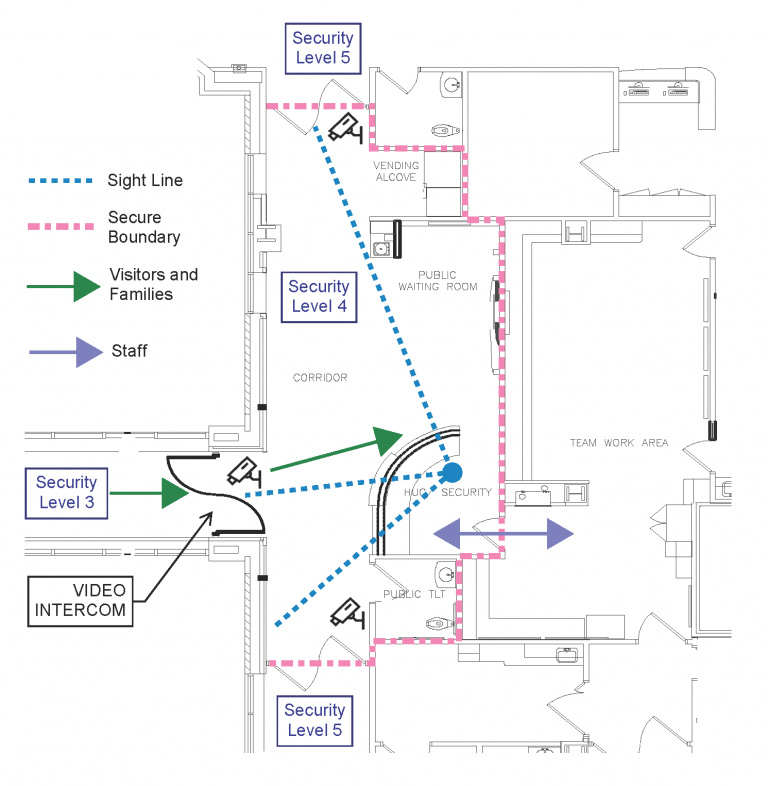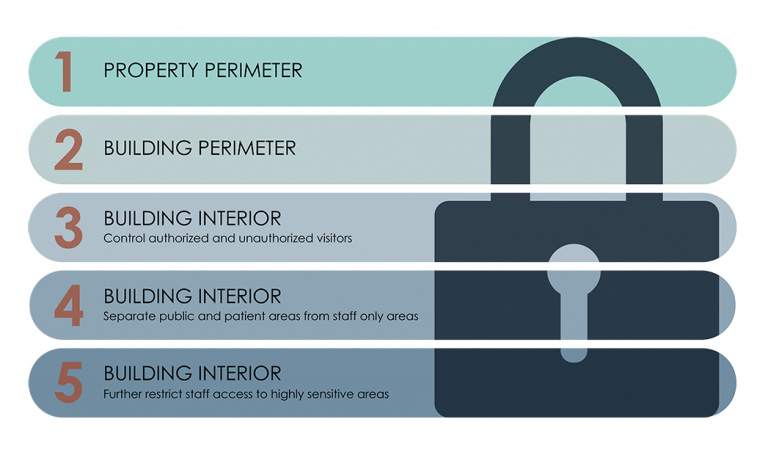We are all probably familiar with the phrase “Code Blue” from watching medical drama shows. A less well-known phrase is “Code Pink”, the acknowledged code for an infant abduction in a hospital. Though infant abductions are statistically rare (accounting for only 0.5% of all sentinel events reported to The Joint Commission), even one incident is too many. To ensure the safety of infants and bring peace of mind to new parents, healthcare facilities need to have an anti-abduction plan in place and provide a secure environment.
When my first daughter was born prematurely and needed to stay in the nursery for a few days for treatment, it was hard as a new parent to leave her. Knowing that she would be cared for and protected by the nurses made it easier to and go home and get some much-needed sleep.
Planning for Prevention
The National Center for Missing and Exploited Children in cooperation with U.S. Dept. of Justice issued the Guidelines on Prevention of and Response to Infant Abductions in 2014. According to the Center’s recommendations, an anti-abduction plan should include the following:
- Written Comprehensive Proactive Abduction Prevention Plan
- Incident Response Plan (Code Pink)
- Infant/Parent/Staff Identification Plan
- Identification for the family including matching ID bands, taking footprints, color photos, full physical assessment, cord blood samples & no-cut security tag systems.
- Staff should wear conspicuous, color photo ID badges.
- The facility should require photo ID for all visitors.
- Staff Education Plan – response drills which are part of an ongoing staff training program.
- Parent Education Plan – Parents should be educated on security procedures and encouraged to ask questions if a situation feels uncomfortable.
- Physical Security Infrastructure including real-time cameras, infant abduction alarm systems and electronically locking doors at all exits from the unit.
The Secure Environment
As architects and designers, we focus on designing a physical environment that supports and enhances our client’s proactive abduction prevention plan. The architect’s role in reducing the threat of infant abduction includes designing spaces that can limit access, control movement and aid in monitoring and visualization. The first line of defense for many facilities is to limit access to the birthing unit. Limiting the entrance points for family, visitors and staff to a single location that is controlled by a staff person is highly effective. A single entrance point also makes it easier to ensure that family and visitors are issued ID badges. Providing clear lines of sight throughout the birthing unit is also key. Hidden corners and blind spots are not desirable.

Door Security is Key
Providing a secure boundary for the birthing unit is a critical piece of the physical infrastructure. All exits from the unit – especially into stairwells – should be electronically locked at all times. Controlling exit paths will provide valuable time for staff to intercede if an infant is abducted. The exit doors’ electronic hardware should be integrated with the building’s fire alarm and security systems. To prevent an abductor from pulling the fire alarm to escape the unit, the door electronics should be configured to not unlock if the manual fire alarm is pulled (if approved by the Authority Having Jurisdiction).
With the adoption of IBC 2015 & NFPA 101–2012 in Wisconsin, architects have more ability to lock down hospital birthing departments. IBC 2015 now allows an electronic locking system in occupancies where the clinical needs of the patients require containment. The 2012 edition of NFPA 101 allows special needs locks for patients requiring protective measures for their own safety. These new changes, when carefully coordinated with existing emergency egress systems, allow for a high level of security not available in previous model codes for healthcare facilities. Care should also be taken to secure doors to laundry and garbage chutes to prevent use by any unauthorized persons.
Layers of Security
The goal for the hospital’s security system is to provide a safe environment for the infant and their family. We work hand in hand with the design engineers, the facility’s security staff, and security vendor to develop a comprehensive security system for the birthing unit and healthcare facility. Careful coordination is needed to design a system that is effective and doesn’t detract from the welcoming design of the birthing unit. The security system typically includes cameras, video recording, and 2-way intercom systems at entry points. These components are additional deterrents for a would-be abductor.

An infant protection system is another layer of the security system. A RFID tag secured around the infant’s ankle will activate an alarm if someone tries to take the infant from the birthing unit without proper security clearance. The tag will also alarm if it is tampered with or cut. Infant protection system sensors should be located near the birthing unit’s exit doors, stairwells, and elevators to control movement from the secured area.
Providing peace of mind
As the old saying goes, an ounce of prevention is worth a pound of cure. The time spent developing a comprehensive anti-abduction plan, investing in security and physical infrastructure, and training staff how to respond in the unlikely event of an infant abduction will pay off. New parents will be reassured by the parts of the plan they can see such as security cameras and signage. Proper visual identification for staff, infants, family, and visitors will make new parents more comfortable throughout their stay. Equally important are pieces of the anti-abduction plan that aren’t as visible, such as controlled access and exiting for the birthing unit. These are features which parents will take for granted. All of these security components and the physical environment combine to create a birthing unit that delivers peace of mind to new parents and their bundle of joy.

